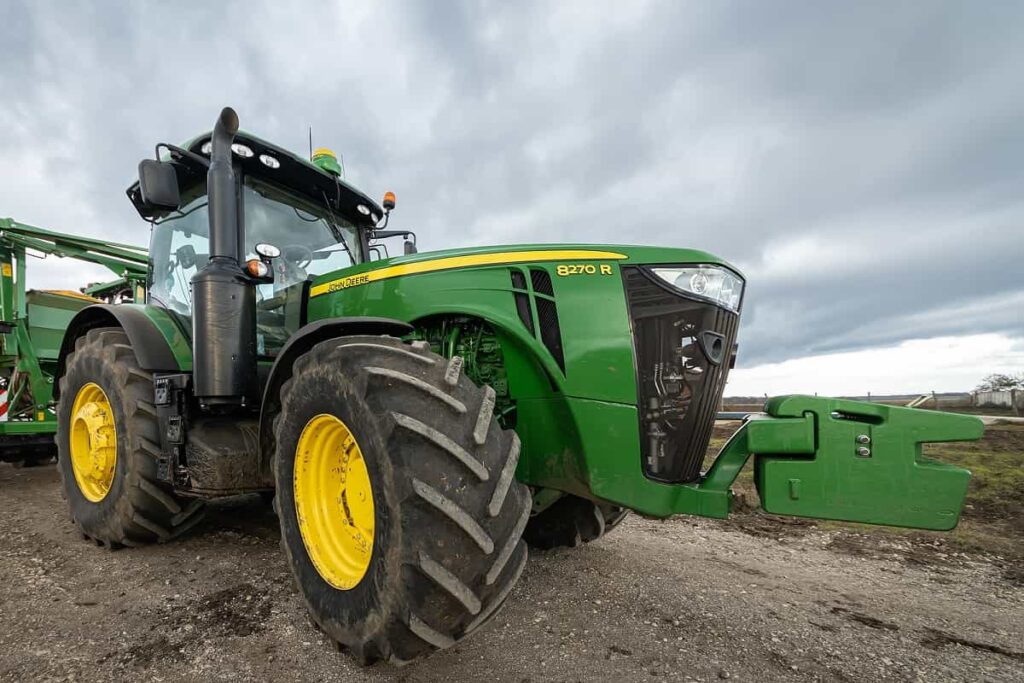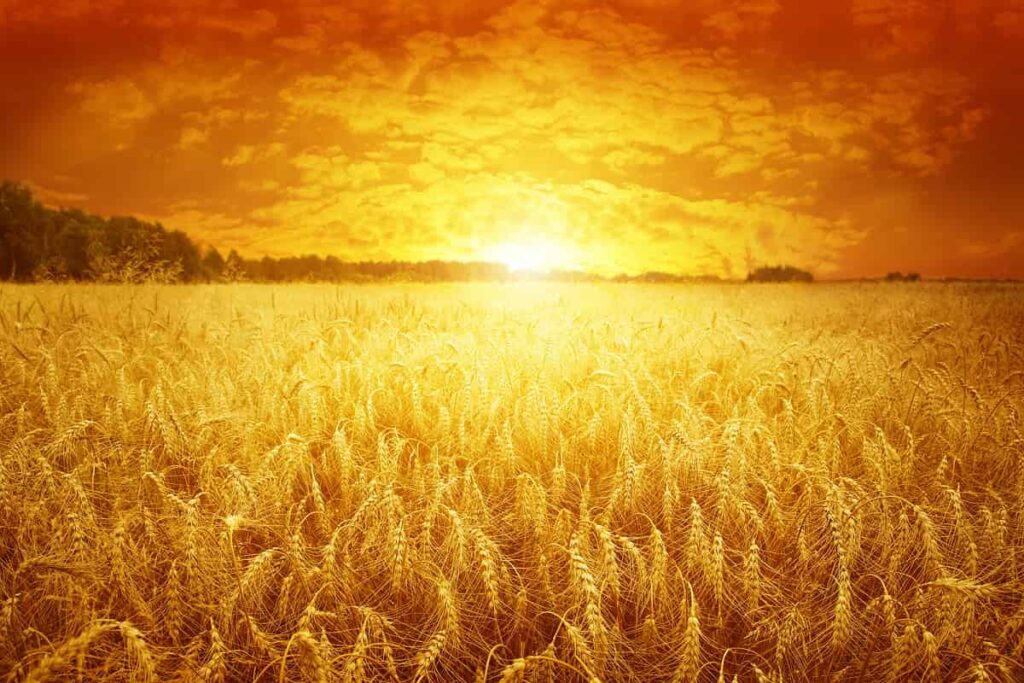What is Precision Agriculture? Here Are 10 Examples
Table of contents

The current world population of 7.7 billion people is expected to reach 8.6 billion by 2030, according to a United Nations report which also cites some other interesting facts. Around 2024, the population of India is expected to surpass that of China. Nigeria, currently the world’s 7th largest country, is projected to surpass that of the United States and become the third-largest country in the world shortly before 2050. Then there’s this little bit:
From 2017 to 2050, it is expected that half of the world’s population growth will be concentrated in just nine countries: India, Nigeria, the Democratic Republic of the Congo, Pakistan, Ethiopia, the United Republic of Tanzania, the United States of America, Uganda and Indonesia (ordered by their expected contribution to total growth).
China isn’t even in that list. That makes for a whole lot of people who need to eat, and there’s plenty of money to be made in feeding them. (Sorry folks, in a world dominated by capitalism, you can’t pull on heartstrings to solve big problems, you have to pull on purse strings.) One way we can solve this problem – and make loads of money while doing so – is through precision agriculture.
What is Precision Agriculture?
The simplest way to understand precision agriculture is to consider it as everything that helps ensure heightened accuracy in farming practices, particularly in terms of crop growth and raising livestock. It’s all about enabling today’s farmer with technologies that will help increase profits and reduce risks. We’re not just talking about information technology, but a broad range of other technologies including telematics, GPS assistance, robotics, automated hardware, agriculture drones, and variable rate technology.
We cannot just start planting more crops on new land to feed a bunch of hungry people in third-world countries. Land costs money. Instead, we need to make better use of our existing farmlands. To do that, farmers are looking towards technology to boost yields while helping to manage costs. Let’s take a look at 10 precision agriculture startups that were featured in the Finistere Ventures 2018 Agtech Investment Review report:

Here are the 10 precision agriculture startups that were featured on the above market map.
10 Examples of Precision Agriculture Startups
Founded in 2014, Cambridge startup CiBo Technologies has taken in $30.3 million in funding so far to develop software platform models that aim to simulate the unique conditions of every intricate agricultural ecosystem anywhere in the world. In other words, you can create “virtual fields” with real-world inputs, then receive suggestions as to how you might optimize your real fields. Doing so helps users boost their sustainability, reduce waste, improve time to market ratio, and utilize their land in the most cost-effective ways. Some of the services it offers are identifying and handling risks in the supply chain, reaching out to sources of high-quality raw materials, tracking crop requirements in real time, and simulating a crop’s responses to pests and other bugs. Maybe next, they can turn these virtual fields into some sort of new eSports game and get high school kids to do all the work for free.

And it’s not just about what has already happened. Their global network of more than 1.5 million virtual weather stations provides daily observed and hourly forecast information which comes in quite handy for your average farmer who may not have access to such sophisticated equipment. Their solution also extends up the supply chain as well. For example, aWhere utilizes a feature called Allocation Optimization that helps locate stores capable of selling more specific products based on demographics and such.
Update 12/15/2021: Due to the cascading challenges of significant unpaid invoices, an inability to raise new funds, decrease in sales attributed in part to COVID and the travel lock down to our client countries, aWhere was declared insolvent.
Founded in 2013, Michigan startup Farmobile has taken in $23.6 million in funding so far to create the Farmobile DataEngine, a powerful platform that ingests and standardizes farming data so that it can be shared and used to create insights. For example, the Farmobile PUC — a simple plug-in device — automatically streams agronomic and machine data from farm equipment via cellular:
And guess what? Once you start generating all that big data, you can then sell it to create an additional revenue stream. Since it began in 2016, hundreds of farmers have received more than $500k in revenue from Farmobile DataStore transactions.
Founded in 2015, San Francisco Bay Area startup Trace Genomics has taken in $19 million in funding so far to provide soil DNA sequencing services to farmers and agronomists. The company classifies and profiles the soil microbiome as well as interprets the soil health and risk indicators through combining DNA sequencing, AI-enabled diagnostic tools, and their exhaustive database on microbial species found in agricultural soils.

Through their analysis, Trace Genomics helps farmers increase their yields and lower costs. Since we first covered the startup in our article on 9 AgTech Startups Using AI to Grow Smarter, they’ve managed to raise an additional $13 million in funding which closed just last month.
Founded in 2012, Illinois startup + has taken in $5.5 million in funding so far to develop a cloud-based application that helps farmers fulfill the requirements set forth by the United States Department of Agriculture (USDA) and Farm Service Agency (FSA). In particular, the company assists its users with data collection and accurate reporting methods to satisfy crop insurance obligations as required by the USDA. This system aims to simplify and streamline acreage reporting to benefit agriculture service providers, insurance agents, and of course farmers. Even farmers need to deal with the painful process of compliance – something that’s so dreadfully boring that we’re already tired of talking about it. Let’s move on.
Founded in 1999, Des Moines startup Premier Crop Systems has taken in $4.7 million in funding so far to offer data analysis software to farmers to help them make better agronomic choices based on agronomic data. Essentially, agronomic data is all the data specific to a farmer’s own fields. And your fields will change over time, so you need to analyze the data every year. They’ve put together “an opt-in network of elite growers” who all leverage the platform to increase yields and as more information is accumulated, everyone benefits. To join this elite club, you’ll need to know their secret handshake – or just drop them an email.
Founded in 2014, Sydney startup AgriWebb has taken in $14.4 million in funding so far to provide “full farm record keeping in your pocket, on the go and offline.” Most farmers spend about 5.5 minutes entering data into the AgriWebb platform, and the system does the rest, producing dashboards and reports that can track assets on one or more farms, things like feed, fertilizer, chemicals, livestock, farm equipment, and just about anything else you used to use that whiteboard in the barn to keep track of.
The tool is subscription-based, and they have a whole list of success stories you can peruse while you decide whether or not to bring your farm into the digital era.
Update 01/18/2021: Agriwebb has raised $23 million in Series B funding for their livestock management platform. This brings the company’s total funding to $36.5 million to date.




The practice isn’t entirely new, but the use of big data for decision making is where all optimizations can be had.
Conclusion
All the “sky is falling” types love to drone on about how “the man” is sticking it to everyone and how “broken” the system is. (These are usually people who are in the global “1%” themselves.) That’s all a crock of horse manure when you look at how things are playing out on the global stage. Extreme levels of poverty have simply plummeted, thanks in part to technology and capitalism.

You can try to convince people to eat less meat because farting cows cause global warming but frankly, few people care enough to change their lifestyles so that the planet can be saved – or heaven forbid – a bunch of “Africans” can have some food. The solution to improving the lifestyles of people around the world is to continue pursuing technological advancements like precision agriculture so that people continue to rise out of poverty as our population continues to grow. Over time, technologies like the ones we’ve just discussed will help every farmer become outstanding in his or her field. And that means more food for everyone.
Sign up to our newsletter to get more of our great research delivered straight to your inbox!
Nanalyze Weekly includes useful insights written by our team of underpaid MBAs, research on new disruptive technology stocks flying under the radar, and summaries of our recent research. Always 100% free.

















Great platforms. This technology will help poor countries to get those farms up and being efficient. We need to take care of soil otherwise there will be bad or not at all harvest.
SDG13 is about climate change and soil degradation is also very important as is can be damaged forever. Found similar business models. Have a look, it might complement your list.
You provided a link to a page which promotes a paid report so we had to remove that. We do have a content marketing offering, and we’re happy to provide you with more information on that.
It so innovative
Indeed